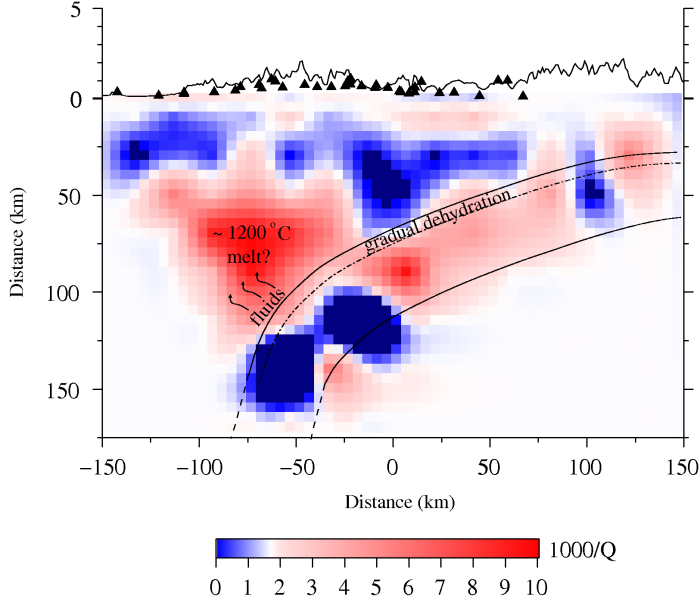

 |
We used P and S wave attenuation (Q) from local earthquakes in central
Alaska as a proxy for temperature in the mantle wedge. This is a region
of active subduction and high seismicity rates, yet there has been no
significant volcanism in the Alaska Range, which contains some of the
highest topography in North America. The shallowest part of the wedge
shows little attenuation, as expected for a cold viscous nose that is
not involved in wedge corner flow. Overall, the spatial pattern of Q
beneath Alaska is qualitatively similar to other subduction zones,
although the highest wedge attenuation is about a factor of 2 lower.
The Q values imply that temperatures exceed 1200°C in the wedge, on the
basis of recent laboratory-based calibrations for dry peridotite. These
temperatures are 100–150°C colder than we infer beneath Japan or the
Andes, possibly explaining the absence of arc volcanism in central
Alaska.  |